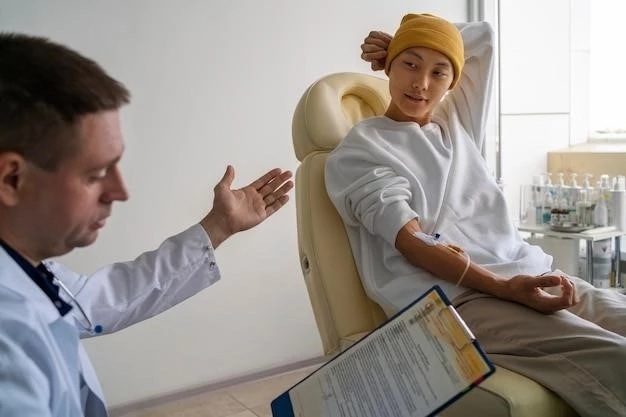Understanding Achondrogenesis Type 2

Below are essential topics regarding Achondrogenesis Type 2⁚
- Causes of Achondrogenesis Type 2
- Symptoms of Achondrogenesis Type 2
- Treatment Options for Achondrogenesis Type 2
- Genetic Factors in Achondrogenesis Type 2
- Diagnosis, Management, and Support for Achondrogenesis Type 2
Causes of Achondrogenesis Type 2
Understanding the causes of Achondrogenesis Type 2 is crucial for identifying risk factors and potential preventive measures. This rare genetic disorder is primarily caused by mutations in the gene responsible for producing type II collagen. These mutations affect the development of cartilage and bone, leading to the characteristic features of the condition. In most cases, Achondrogenesis Type 2 occurs sporadically, meaning it is not inherited from parents. However, in some instances, the condition may be inherited in an autosomal recessive pattern, where both parents carry a copy of the mutated gene. Environmental factors are not known to play a significant role in the development of this condition. Genetic counseling is recommended for individuals with a family history of Achondrogenesis Type 2 to understand the genetic risks and potential impact on future generations.
Symptoms of Achondrogenesis Type 2
Recognizing the symptoms of Achondrogenesis Type 2 is crucial for timely diagnosis and management. Individuals with this condition typically exhibit severe skeletal abnormalities, including short limbs, a narrow chest, a prominent abdomen, and a small ribcage. Other common features include a flat face, a soft and large head with a prominent forehead, and a cleft palate. Infants born with Achondrogenesis Type 2 may have difficulty breathing due to underdeveloped lungs and may experience feeding problems. Additional symptoms may include joint contractures, a small chin, and distinctive hand and foot abnormalities. It is essential for healthcare providers to be familiar with these symptoms to facilitate early intervention and support for affected individuals and their families.
Treatment Options for Achondrogenesis Type 2
While there is currently no cure for Achondrogenesis Type 2, treatment focuses on managing symptoms and providing supportive care to improve the quality of life for individuals with the condition. A multidisciplinary approach involving geneticists, pediatricians, orthopedic specialists, and other healthcare professionals is essential to address the complex needs of affected individuals. Treatment may involve physical therapy to enhance mobility and prevent joint contractures, respiratory support to manage breathing difficulties, and nutritional support to address feeding challenges. In some cases, surgical interventions may be considered to address specific complications associated with Achondrogenesis Type 2. It is crucial for healthcare providers to tailor treatment plans to meet the unique needs of each individual and provide ongoing support to both patients and their families.
Genetic Factors in Achondrogenesis Type 2
Understanding the genetic factors underlying Achondrogenesis Type 2 is crucial for accurate diagnosis and genetic counseling. This condition is primarily caused by mutations in the COL2A1 gene٫ which provides instructions for producing type II collagen٫ a protein essential for the development of cartilage and bone. These mutations disrupt the normal formation of cartilage٫ leading to the skeletal abnormalities characteristic of Achondrogenesis Type 2. Most cases of this condition result from new mutations and occur randomly٫ while in rare instances٫ it may be inherited in an autosomal recessive pattern. Genetic testing plays a vital role in confirming a diagnosis٫ understanding the inheritance pattern٫ and providing information on the risk of recurrence in families. For individuals affected by or carriers of Achondrogenesis Type 2٫ genetic counseling can offer valuable support in making informed decisions about family planning and accessing appropriate medical care.
Diagnosis, Management, and Support for Achondrogenesis Type 2
Diagnosing Achondrogenesis Type 2 involves a thorough clinical evaluation, imaging studies, and genetic testing to confirm the presence of characteristic skeletal abnormalities and identify the underlying genetic mutation. Once diagnosed, a comprehensive management plan tailored to the individual’s needs is essential. This plan may include ongoing monitoring by a team of healthcare professionals, such as geneticists, orthopedic specialists, and physical therapists, to address specific symptoms and provide supportive care. Additionally, emotional and psychological support is crucial for individuals and families navigating the challenges associated with this rare condition. Seeking support from patient advocacy groups and connecting with other families facing similar experiences can provide valuable resources and a sense of community. By combining accurate diagnosis, proactive management, and robust support networks, individuals with Achondrogenesis Type 2 can receive comprehensive care and lead fulfilling lives to the best of their abilities.
